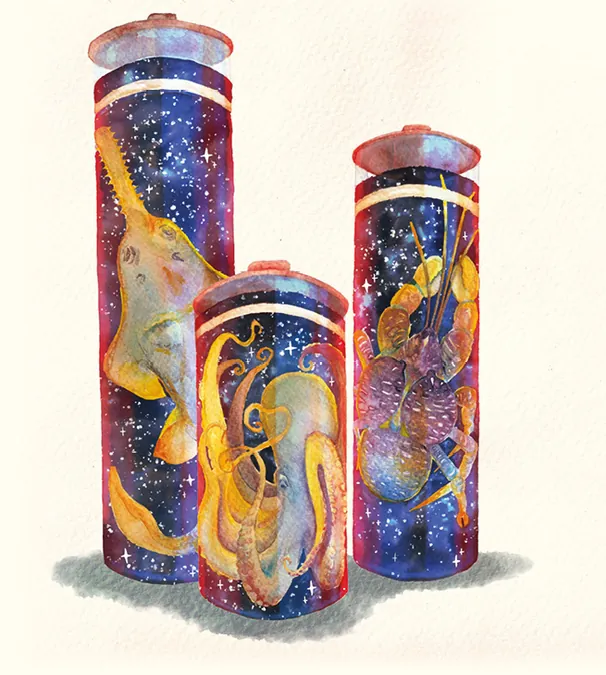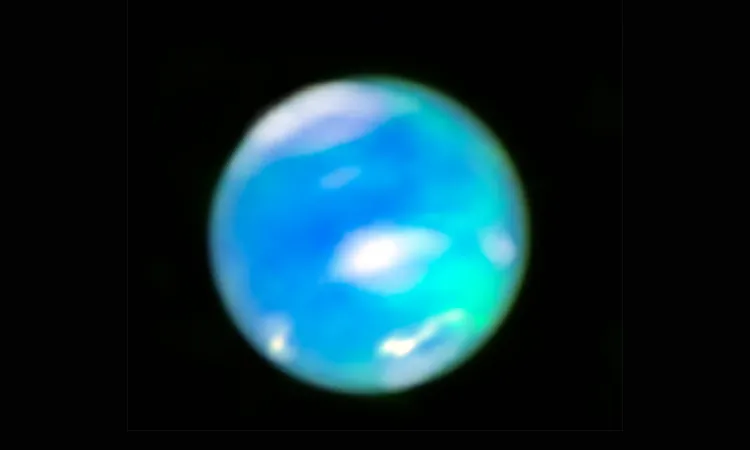
Breakthrough in Natural History Collections: New Method to Identify Preservation Fluids Without Opening Specimen Jars!
2025-03-29
Author: Arjun
Introduction
Imagine stepping into a natural history museum and gazing at countless jars filled with species long past—each suspended in mysterious preservation fluids. While experts may routinely utilize various alcohols to conserve these specimens, surprises can lurk in these jars, particularly when some specimens were collected decades or even centuries ago. Curators must often guess the exact composition of the preserving solutions, which could risk damaging invaluable collections.
Importance of Preservation Fluids
Preserving the integrity of specimens not only involves expert curation but also a critical understanding of the fluids that maintain them. Over time, preservation fluids can break down due to environmental influences like temperature changes and contamination from external sources. Moreover, jars that lack proper seals can lead to evaporation, further threatening the specimens they house. Thus, the composition of the preservation fluids becomes crucial information for curators dedicated to conserving natural history collections.
Traditional Analysis Methods
Typically, professionals analyze these fluids through methods like gas chromatography or digital density meters, but these techniques necessitate opening jars, thereby exposing the specimens to possible harm and risking human safety due to unknown chemical reactions. This has led researchers to seek non-invasive methods to identify these fluids safely.
Innovative Research Study
Enter an innovative study from a collaborative team composed of researchers from the Central Laser Facility, the Natural History Museum, and international partners. They utilized cutting-edge Raman spectroscopy, a technique that detects molecular vibrations when exposed to laser light, allowing them to identify chemicals within substances without opening any jars. Their groundbreaking approach involves a newly developed form of this method, known as spatially-offset Raman spectroscopy (SORS), which permits analysis of even opaque containers.
Applications of SORS
This innovative technique isn’t new—it has been successfully implemented in various domains, from enhancing airport security to verifying the authenticity of products like honey. However, its application within cultural heritage and museum settings remains largely untapped until now.
Experimental Results
In their experiments, the researchers employed handheld SORS devices to analyze fluid contents within specimen jars. They created a series of solutions mimicking typical preservation fluids—such as formaldehyde and ethanol—then measured how these mixtures behaved when struck by laser light. Each fluid produced a distinct Raman spectrum—a unique fingerprint for identification—allowing for differentiation between various chemical compositions.
Conclusions and Implications
Both regular lab vials and historical jars were used in the testing, yielding clear and consistent results. The study has opened new pathways for museums and natural history collections to analyze and maintain fluid compositions non-invasively, paving the way for better conservation strategies—an essential breakthrough for the protection of our planet's biological history.
Future Prospects
Imagine the implications! This method could revolutionize how curators manage their collections, ensuring that the treasures of our natural world are preserved for future generations.
Further Reading
For those interested in further details, the full findings of this pivotal research can be accessed in the American Chemical Society's journal Omega. Don’t miss out on this exciting advancement in scientific methods for the conservation of our natural history!


 Brasil (PT)
Brasil (PT)
 Canada (EN)
Canada (EN)
 Chile (ES)
Chile (ES)
 Česko (CS)
Česko (CS)
 대한민국 (KO)
대한민국 (KO)
 España (ES)
España (ES)
 France (FR)
France (FR)
 Hong Kong (EN)
Hong Kong (EN)
 Italia (IT)
Italia (IT)
 日本 (JA)
日本 (JA)
 Magyarország (HU)
Magyarország (HU)
 Norge (NO)
Norge (NO)
 Polska (PL)
Polska (PL)
 Schweiz (DE)
Schweiz (DE)
 Singapore (EN)
Singapore (EN)
 Sverige (SV)
Sverige (SV)
 Suomi (FI)
Suomi (FI)
 Türkiye (TR)
Türkiye (TR)
 الإمارات العربية المتحدة (AR)
الإمارات العربية المتحدة (AR)